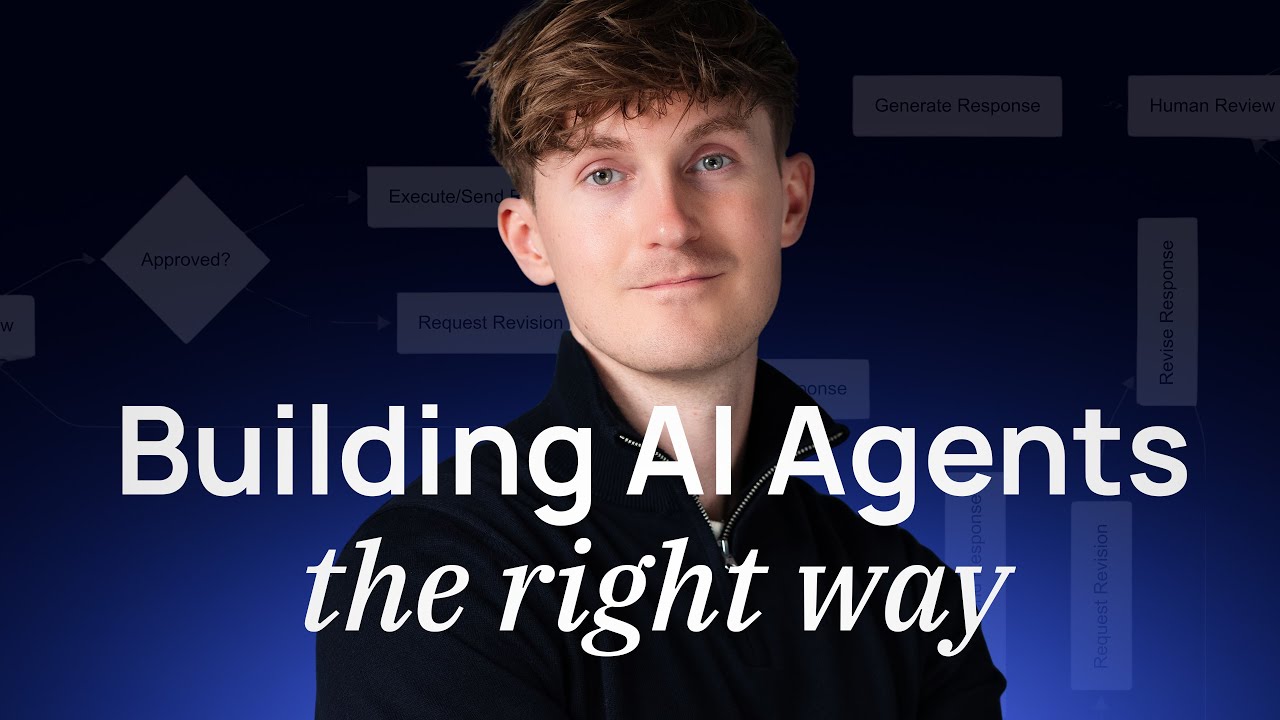The video explains that building reliable AI agents in 2025 hinges on mastering seven foundational building blocks—intelligence, memory, tools, validation, control, recovery, and feedback—while minimizing unnecessary reliance on large language model calls. By focusing on these core principles and combining deterministic programming with strategic LLM integration, developers can create effective, production-ready AI systems despite the overwhelming and rapidly evolving AI landscape.
The video addresses the overwhelming and confusing landscape developers face in 2025 when building AI agents, emphasizing that despite the flood of tools, frameworks, and hype, the core principles remain simple and foundational. The presenter, an experienced AI developer with over a decade in the field, stresses that most effective AI agents are not fully autonomous but rather deterministic software systems that strategically incorporate large language model (LLM) calls only where necessary. He advises developers to focus on fundamental building blocks rather than chasing every new framework or trend, as the underlying interaction with LLMs has remained consistent despite improvements in model capabilities.
Central to building reliable AI agents are seven foundational building blocks. The first is the intelligence layer, which involves making API calls to LLMs to process user inputs and generate responses. The second is memory, which manages context persistence across interactions since LLMs are stateless and require conversation history to maintain continuity. Third, tools enable integration with external systems, allowing the AI to perform actions beyond text generation, such as calling APIs or updating databases. These tools extend the LLM’s capabilities by letting it decide when to invoke specific functions, enhancing the agent’s practical utility.
The fourth building block is validation, crucial for ensuring that the LLM’s output conforms to expected structured formats, typically JSON schemas. This step is vital because LLMs can produce inconsistent or incorrect outputs, and validating responses allows developers to enforce data integrity and reliability. The fifth block is control, which involves deterministic decision-making and process flow management using traditional programming constructs like if-else statements. This approach segments workflows into modular components, letting the system route tasks based on classified intents rather than relying solely on the LLM’s judgment, which improves predictability and debuggability.
Recovery and feedback form the final two building blocks. Recovery involves robust error handling, retry logic, and fallback mechanisms to maintain system reliability in the face of API failures, rate limits, or unexpected outputs. Feedback introduces human oversight into workflows, especially for complex or sensitive tasks where full automation is risky. By incorporating human-in-the-loop approval steps, developers can ensure quality control and mitigate potential errors before actions are finalized, balancing automation with necessary caution.
In conclusion, the video encourages developers to break down complex problems into smaller subproblems and solve each using these foundational building blocks, minimizing reliance on LLM calls except when absolutely necessary. By mastering these principles—intelligence, memory, tools, validation, control, recovery, and feedback—developers can build effective, reliable AI agents that are production-ready. The presenter also points to additional resources for learning how to orchestrate these components into complete workflows, emphasizing that understanding these basics will provide clarity and confidence amid the noisy and rapidly evolving AI landscape.
